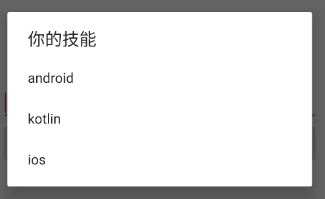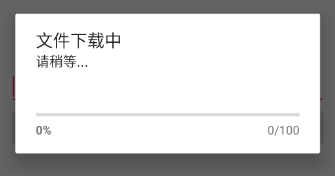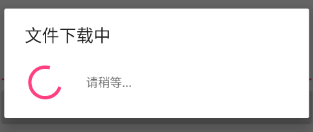Android开发者的Anko使用指南(二)之Dialogs
在项目中使用
Anko Dialogs
dependencies {
compile "org.jetbrains.anko:anko-commons:$anko_version"
compile "org.jetbrains.anko:anko-design:$anko_version" // For SnackBars
}
Toasts
toast("hello anko")
toast(R.string.message)
longToast("hello anko")
SnackBar
snackbar(view, "Hi anko!")
snackbar(view, R.string.message)
longSnackbar(view, "Wow, such duration")
snackbar(view, "Action, reaction", "Click me!") { doStuff() }
Alerts Dialog
-
默认的alert dialog
alert("Hi, I'm Roy", "Have you tried turning it off and on again?") {
yesButton { toast("Oh…") }
noButton {}
}.show() -
使用appcompat实现
alert(AppCompat,"message").show()
-
自定义
alert{
customView{
editText()
}
}.show()
Selector
var log = listOf("android","kotlin","ios")
selector("你的技能",log,{
dialogInterface, i -> toast("你现在会${log[i]},对吗")
})


Progress dialogs
创建进度条对话框并显示
val progressDialog = progressDialog(message="请稍等...",title="文件下载中")

- 不确定进度的对话框
indeterminateProgressDialog()
![不确定进度的对话框]()




 浙公网安备 33010602011771号
浙公网安备 33010602011771号